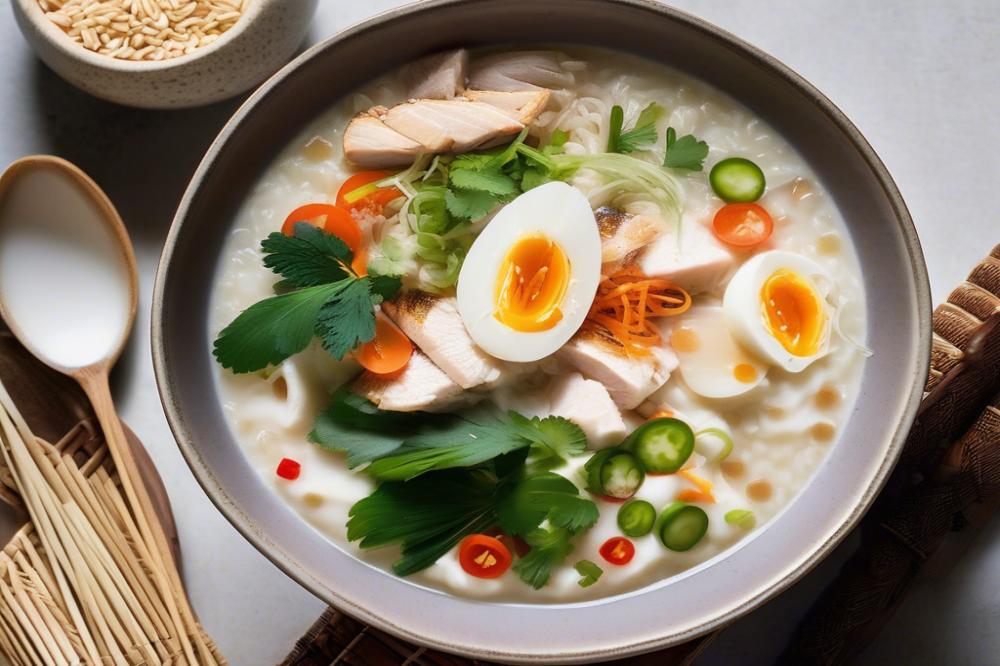Introduction
Cháo is more than just a dish in Vietnamese culture; it holds a special place in the hearts of many. This rice porridge is a staple, beloved by people of all ages. Its warm, inviting texture makes it an ideal choice whether for breakfast or when someone needs a nourishing meal. Comfort food plays a significant role in Asian culinary tradition. These dishes often evoke feelings of home and family, offering warmth and a sense of belonging.
The focus of this article is a delightful recipe: Vietnamese rice porridge with chicken. This dish is easy to make and highlights the comfort of warm soup. With tender pieces of chicken and fragrant rice, it creates a satisfying balance of flavors. Many families enjoy this comforting meal on cold mornings or when someone feels under the weather. It is not only delicious but also a healthy option packed with nutrients. There is something soothing about a bowl of Cháo, and it can lift spirits with every spoonful.
Understanding Cháo
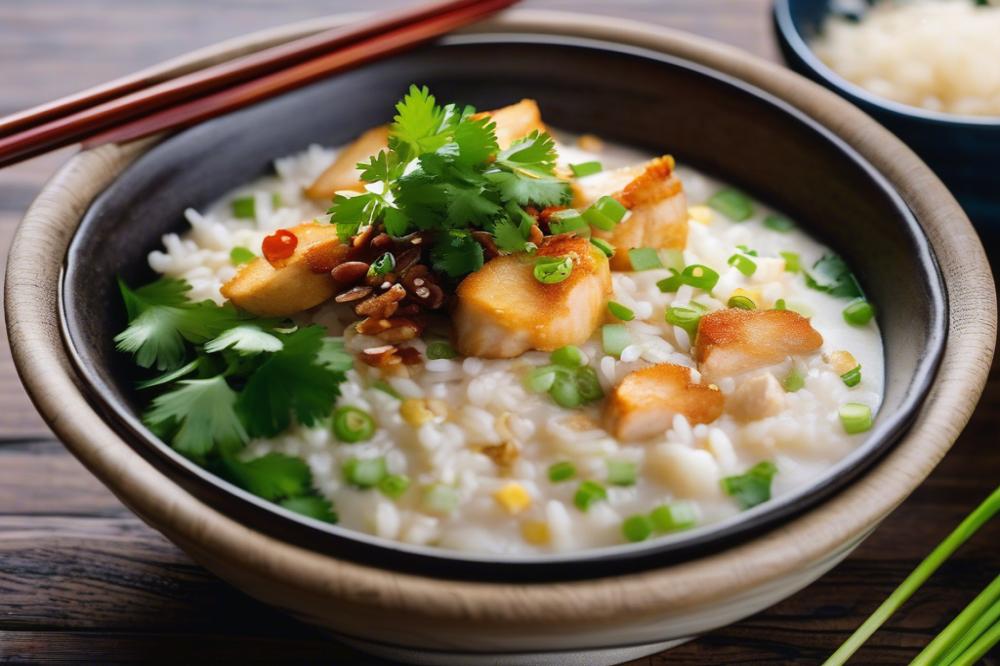
Cháo is a type of rice porridge, commonly found in Vietnamese cuisine. This simple dish delivers warmth and comfort, especially during chilly mornings or when someone is feeling under the weather. A basic recipe often includes chicken, making it not only filling but also healthy and nutritious.
Different regions in Vietnam have their own unique takes on this favorite breakfast option. In the north, the porridge tends to be thinner with less seasoning, allowing the natural flavors to shine through. Families in the south prefer a richer brew, often adding spices and herbs for added depth. Each preparation reflects the local culinary tradition and showcases regional ingredients.
This dish holds a special place in the hearts of many. Traditionally enjoyed as breakfast, it serves as an easy to make meal that appeals to all ages. Street vendors often sell it, further emphasizing its importance in daily life. When served, it’s common for people to personalize their bowls with toppings like green onions, fried shallots, or chilies, enhancing the soup’s flavor.
Cultural significance can be observed across various gatherings and events. It often appears during celebrations or in family rituals. The practice of sharing a bowl of rice porridge fosters togetherness, making it a comforting dish for both casual and special occasions.
Ingredients and Cooking Instructions
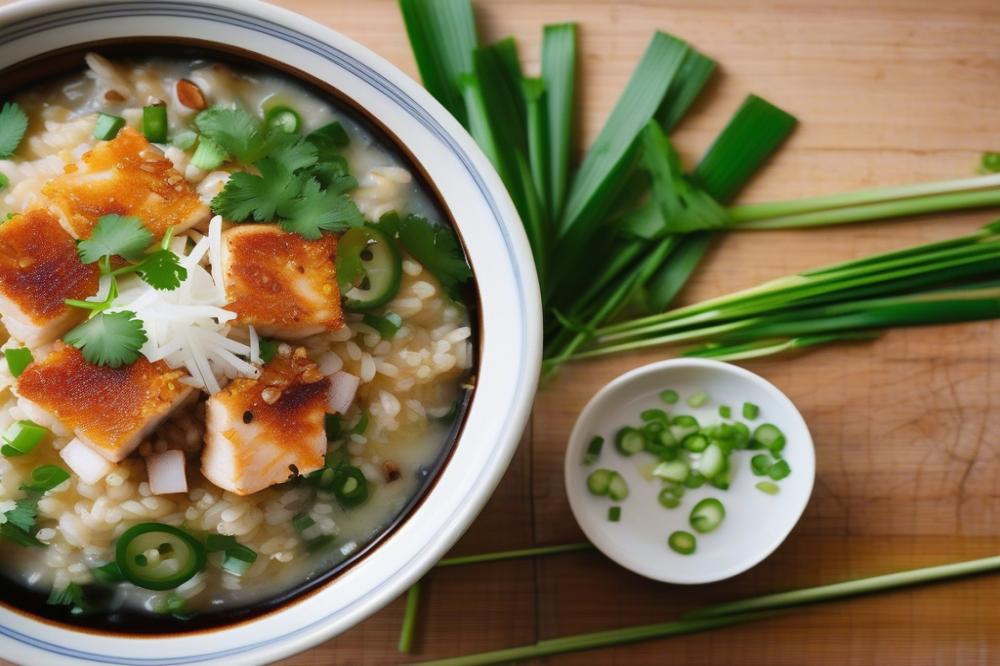
Ingredients List with Quantities
- 1 cup jasmine rice
- 1 whole chicken (about 3-4 pounds)
- 8 cups chicken broth or water
- 2 tablespoons ginger, minced
- 2 tablespoons scallions, chopped
- 1 tablespoon salt
- 1 teaspoon pepper
- Optional garnishes: cilantro, fried shallots, lime wedges
Step-by-Step Cooking Instructions
Begin by preparing the chicken and broth. Place the whole chicken into a large pot and cover it with the chicken broth or water. Add minced ginger, salt, and pepper. Bring the mixture to a boil, then reduce to a simmer. Cook until the chicken is tender, about 30 to 40 minutes.
Next, cook the rice gently. Rinse jasmine rice under cold water until the water runs clear. After that, add the rinsed rice to the pot with the chicken and broth. Stir gently as the rice cooks and absorbs the flavors. Let this simmer for another 20 minutes.
Combine the cooked chicken with the rice. Shred the chicken and return it to the pot. Stir everything together and simmer for an additional 10 minutes. The texture should be creamy, almost like a thick soup. Adjust seasoning according to taste.
Serve the dish hot, allowing everyone to add their own garnishes. Cilantro, fried shallots, and lime wedges make excellent toppings. This recipe serves as a wonderful comfort food, perfect for breakfast or any time you need warmth. Its easy-to-make nature makes it a staple in many households.
Nutritional Information for Key Ingredients
Here are some nutritional values of the key components: Jasmine rice contains about 205 calories per cup, providing carbohydrates for energy. A whole chicken offers approximately 20 grams of protein per serving, making it a great source of lean protein. The added ginger and scallions contribute minimal calories but are packed with flavor and healthy benefits.
Health Benefits of Cháo
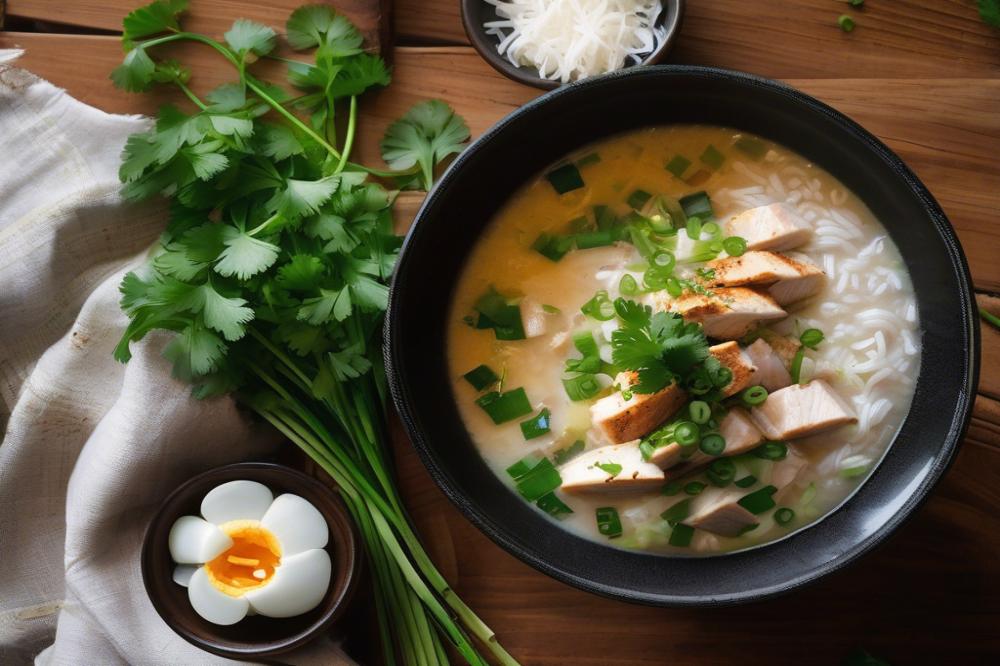
Chicken is a vital ingredient in this recipe. It serves as a high-quality protein source. This nutrient aids muscle growth and repair. It also supports the immune system. Including chicken in meals can help maintain strong health.
Jasmine rice provides several advantages as a whole grain. This type of rice is not only fragrant but also nutritious. Whole grains like jasmine rice are beneficial for digestion. They offer essential vitamins and minerals that promote good health. Eating rice as part of breakfast can sustain energy levels throughout the morning.
The role of ginger is another highlight in this dish. Known for its spicy warmth, ginger can aid in digestion. It helps calm the stomach and reduces nausea. Additionally, ginger plays a role in boosting immunity. Incorporating it into your diet can support overall wellness.
This dish is often seen as a healthy comfort food option. Preparing warm soup creates a feeling of coziness, especially on chilly days. The easy-to-make nature of the recipe appeals to many. It invites people to enjoy a bowl that nourishes both body and spirit. With roots in Asian cuisine, Cháo connects us to a rich culinary tradition.
Variations and Serving Suggestions
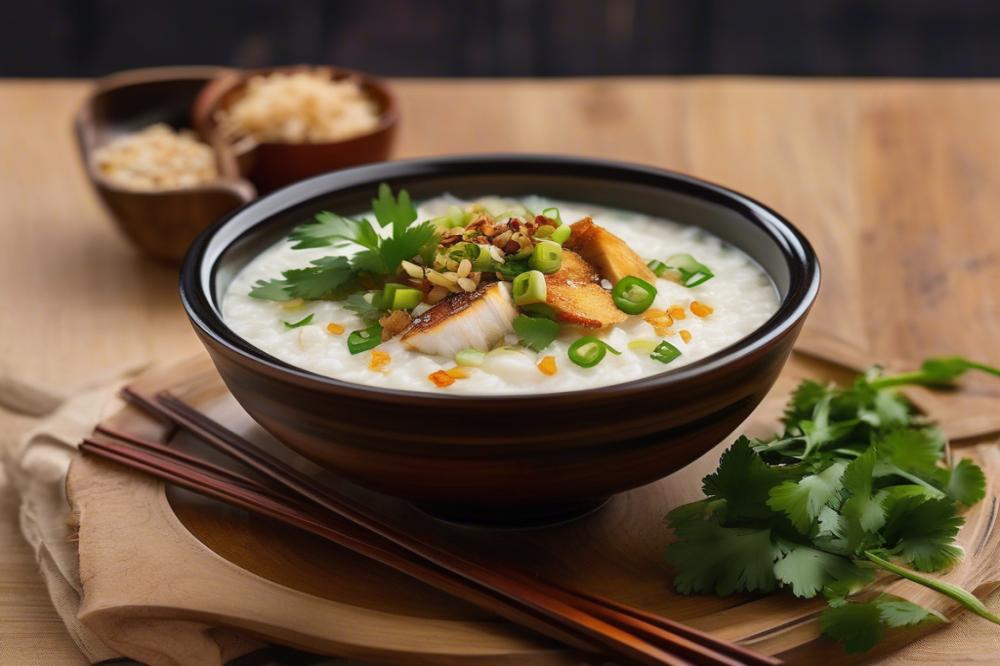
Popular Regional Variations of Cháo in Vietnam
Cháo comes in many forms across Vietnam. Each region brings its own twist to this classic comfort food. In the north, it’s common to find a lighter version. This style often uses chicken or fish, resulting in a more delicate flavor. Travel to the south, and you’ll encounter heartier recipes. Here, ingredients like shredded pork or duck are more common. The southern variation might even include coconut milk for a richer taste.
Creative Spins on the Traditional Recipe
There’s room to get inventive with this recipe. Some people like to add herbs like cilantro and green onions for freshness. Others might spice things up with chilies or ginger. Mixing in vegetables such as carrots, peas, or mushrooms can enhance the nutrition. Consider using quinoa or another grain instead of rice for a different texture. This twist offers a unique way to enjoy an old favorite.
Serving Suggestions for Breakfast or as a Warm Soup
Serving Cháo can be as flexible as the recipe itself. Many enjoy it for breakfast, relishing the warm, soothing broth. It can also serve as a tasty lunch or light dinner. Serve it in a deep bowl and garnish with fresh herbs for presentation. A squeeze of lime adds brightness. Pair it with pickled vegetables for some tang, creating a complete meal.
Tips for Customizing Flavors and Textures
Customization is key with this dish. Adjust the consistency based on personal preference. If you prefer thicker soup, use less water during cooking. Season with soy sauce, fish sauce, or sesame oil to enhance flavors. Experiment with toppings like fried shallots or crushed peanuts for crunch. Add soft-boiled eggs for extra protein and richness. With these variations, each bowl becomes a personal creation.
Final Thoughts on Cháo
This warm rice porridge holds a special place in Vietnamese culture. Rooted in tradition, it serves as comfort food for many. In various homes, families gather around bowls of this dish during special occasions and even on sick days. It reflects warmth, love, and care, making it much more than just a meal.
Trying your hand at this recipe can be a rewarding experience. Gather your ingredients and prepare to immerse yourself in a delightful cooking journey. As the inviting aromas fill your kitchen, the process becomes as enjoyable as the final dish. With some patience and creativity, you can create a bowl of goodness that tells a story. Sharing it with friends or family adds to the joy.
Comfort undeniably lies in each spoonful. This simple yet flavorful dish provides nourishment for the body and soul. Whether enjoyed alone or in the company of loved ones, this rice porridge always warms the heart. Take the leap and enjoy the satisfaction of making a dish that embodies care and tradition.

